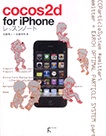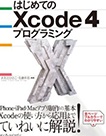Swiftにおけるセレクタ(Selector)について調べてみた
記事内に広告を含む場合があります。記事内で紹介する商品を購入することで、当サイトに売り上げの一部が還元されることがあります。

NSTimerなどを使う際、引数に「Selector」という型があるのですが、これがSwiftではどのような扱いになっているのかを少し調べてみました。
Selectorの使用例 : タイマーの初期化処理
例えばタイマー処理を行う場合、例えば以下のようなコードを書いて初期化を行います。
class ViewController: UIViewController {
override func viewDidLoad() {
super.viewDidLoad()
NSTimer.scheduledTimerWithTimeInterval(
1, target: self, selector: "update:", userInfo: nil, repeats: true)
}
func update(timer:NSTimer) {
print(timer)
}
}
scheduledTimerWithTimeIntervalメソッドの宣言は以下のようになっています。
public class func scheduledTimerWithTimeInterval(ti: NSTimeInterval, target aTarget: AnyObject, selector aSelector: Selector, userInfo: AnyObject?, repeats yesOrNo: Bool) -> NSTimer
引数targetと引数selectorを使って、定期的にどのメソッドを呼ばせるのかを指定します。
引数targetの型はAnyObjectなので、任意のクラスインスタンスを渡すことができます。
では、引数selectorの型「Selector」とは、一体何なのでしょうか?
Selectorの宣言
Swiftにおいて、Selectorは以下のように宣言されています。
/// The Objective-C SEL type.
///
/// The Objective-C SEL type is typically an opaque pointer. Swift
/// treats it as a distinct struct type, with operations to
/// convert between C strings and selectors.
///
/// The compiler has special knowledge of this type.
public struct Selector : StringLiteralConvertible, NilLiteralConvertible {
/// Create a selector from a string.
public init(_ str: String)
/// Create an instance initialized to `value`.
public init(unicodeScalarLiteral value: String)
/// Construct a selector from `value`.
public init(extendedGraphemeClusterLiteral value: String)
/// Create an instance initialized to `value`.
public init(stringLiteral value: String)
public init()
/// Create an instance initialized with `nil`.
public init(nilLiteral: ())
}
また、Selectorが適合している「StringLiteralConvertible」と「NilLiteralConvertible」の宣言は以下の通りです。
/// Conforming types can be initialized with arbitrary string literals.
public protocol StringLiteralConvertible : ExtendedGraphemeClusterLiteralConvertible {
typealias StringLiteralType
/// Create an instance initialized to `value`.
public init(stringLiteral value: Self.StringLiteralType)
}
/// Conforming types can be initialized with `nil`.
public protocol NilLiteralConvertible {
/// Create an instance initialized with `nil`.
public init(nilLiteral: ())
}
よって、Selectorとして文字列で指定することもできるし、nilで指定することもできるようになっています。
Selector型は構造体で、文字列を引数とするイニシャライザを持ちます。インスタンスobjに対し、引数のないメソッドsay()をセレクタを使って呼び出すには次のようにします。ここでperformSelector(_:)はNSObjectのメソッドです。
let sel = Selector(“say”)
obj.performSelector(sel)Selector型はプロトコルStringLiteralConvertibleを採用しているため、セレクタの代わりに文字列リテラルを記述することもできます。自動的にイニシャライザが呼び出されます。
obj.performSelector(“say”)
引用元 : 詳解 Swift 改訂版
Selectorの実装
なお、「swift/ObjectiveC.swift at 4d0c060e2189571b0103fa5473ed8d8145d0e231 · apple/swift」をチェックしてみると、Selectorの実装は以下のようになっていました。
/// The Objective-C SEL type.
///
/// The Objective-C SEL type is typically an opaque pointer. Swift
/// treats it as a distinct struct type, with operations to
/// convert between C strings and selectors.
///
/// The compiler has special knowledge of this type.
public struct Selector : StringLiteralConvertible, NilLiteralConvertible {
var ptr : COpaquePointer
/// Create a selector from a string.
public init(_ str : String) {
ptr = str.withCString { sel_registerName($0).ptr }
}
/// Create an instance initialized to `value`.
public init(unicodeScalarLiteral value: String) {
self.init(value)
}
/// Construct a selector from `value`.
public init(extendedGraphemeClusterLiteral value: String) {
self.init(value)
}
// FIXME: Fast-path this in the compiler, so we don't end up with
// the sel_registerName call at compile time.
/// Create an instance initialized to `value`.
public init(stringLiteral value: String) {
self = sel_registerName(value)
}
public init() {
ptr = nil
}
/// Create an instance initialized with `nil`.
@_transparent public
init(nilLiteral: ()) {
ptr = nil
}
}
@warn_unused_result
public func ==(lhs: Selector, rhs: Selector) -> Bool {
return sel_isEqual(lhs, rhs)
}
extension Selector : Equatable, Hashable {
/// The hash value.
///
/// **Axiom:** `x == y` implies `x.hashValue == y.hashValue`
///
/// - Note: the hash value is not guaranteed to be stable across
/// different invocations of the same program. Do not persist the
/// hash value across program runs.
public var hashValue: Int {
return ptr.hashValue
}
}
extension Selector : CustomStringConvertible {
/// A textual representation of `self`.
public var description: String {
if let s = String.fromCStringRepairingIllFormedUTF8(sel_getName(self)).0 {
return s
}
return "<NULL>"
}
}
extension String {
/// Construct the C string representation of an Objective-C selector.
public init(_sel: Selector) {
// FIXME: This misses the ASCII optimization.
self = String.fromCString(sel_getName(_sel))!
}
}
extension Selector : CustomReflectable {
/// Returns a mirror that reflects `self`.
public func customMirror() -> Mirror {
return Mirror(reflecting: String(_sel: self))
}
}
- Equatableプロトコルに適合しているので==演算子で比較することができる
- Hashableプロトコルに適合しているのでSetなどに入れられる
- CustomStringConvertibleプロトコルに適合しているのでprintなどでログ出力したりできる
ということが分かります。
@akio0911はこう思った。
「Selector型って書いてあるのに、なんでStringを渡せるんだろう?」って思ってたんですが、StringLiteralConvertibleプロトコルに適合していたんですね。
Swiftにおけるプロトコルの活用方法が少し分かった気がしました。


関連記事
この記事が気に入ったら「いいね!」しよう
Twitterで更新情報をゲット!










